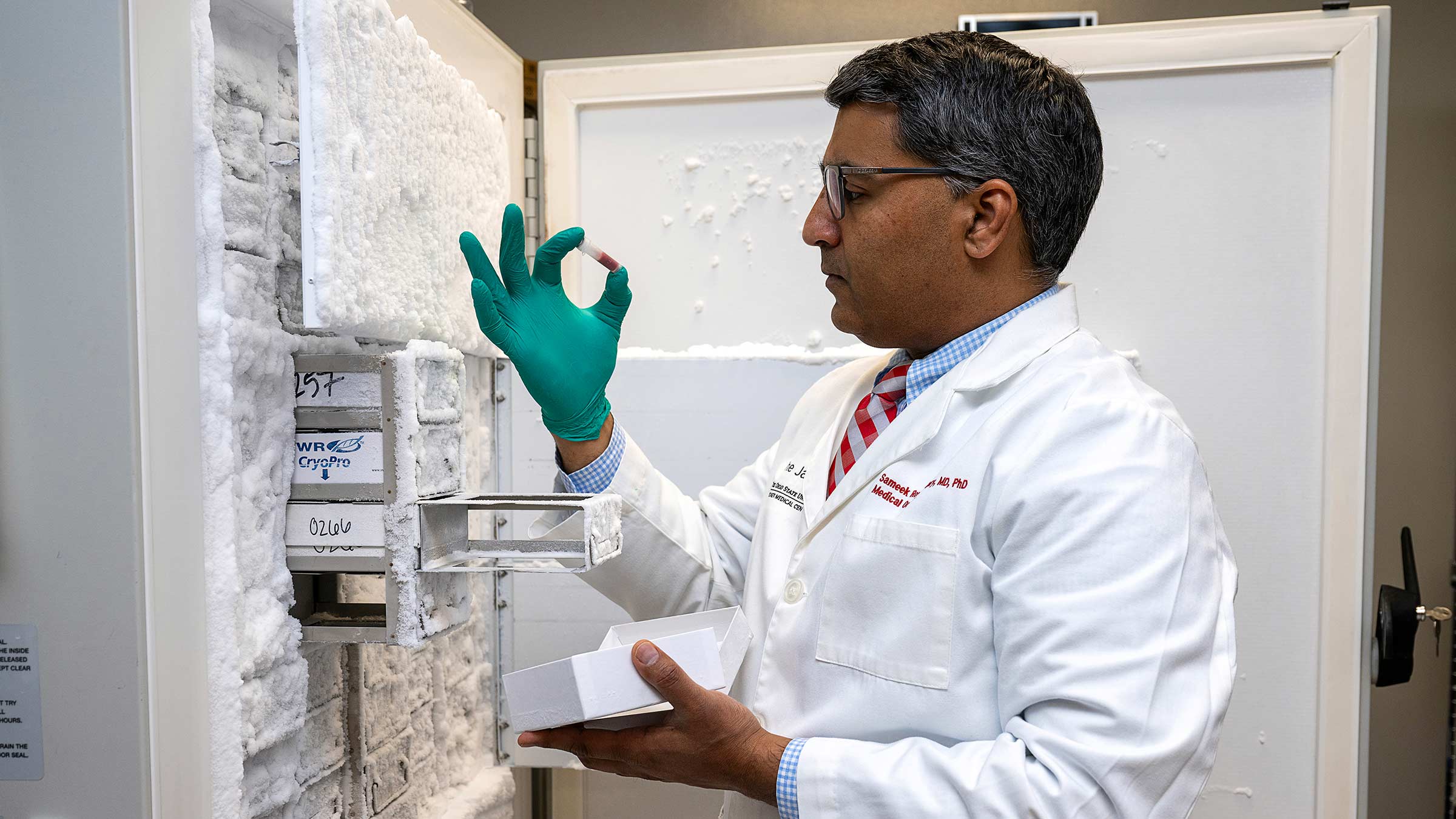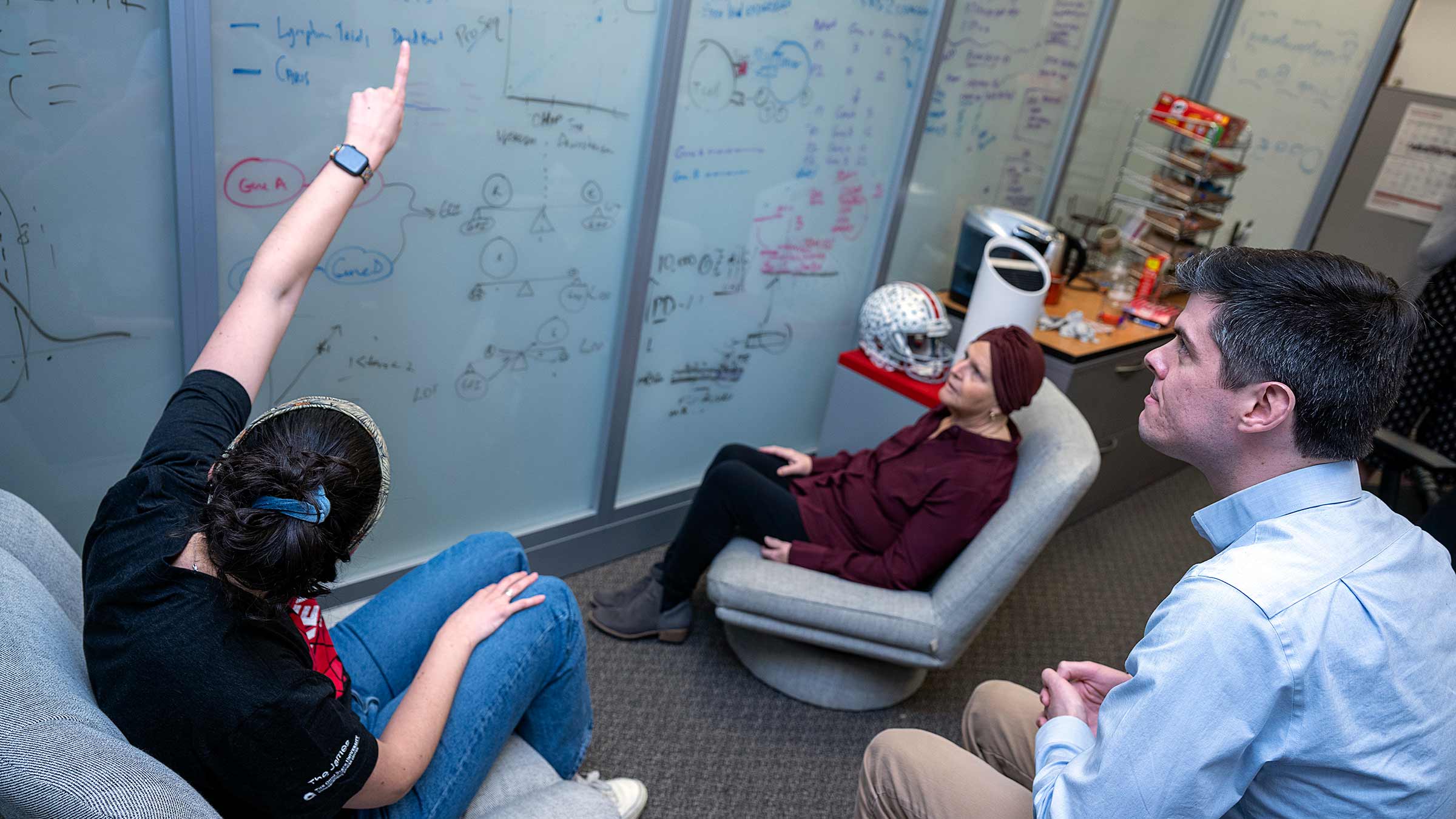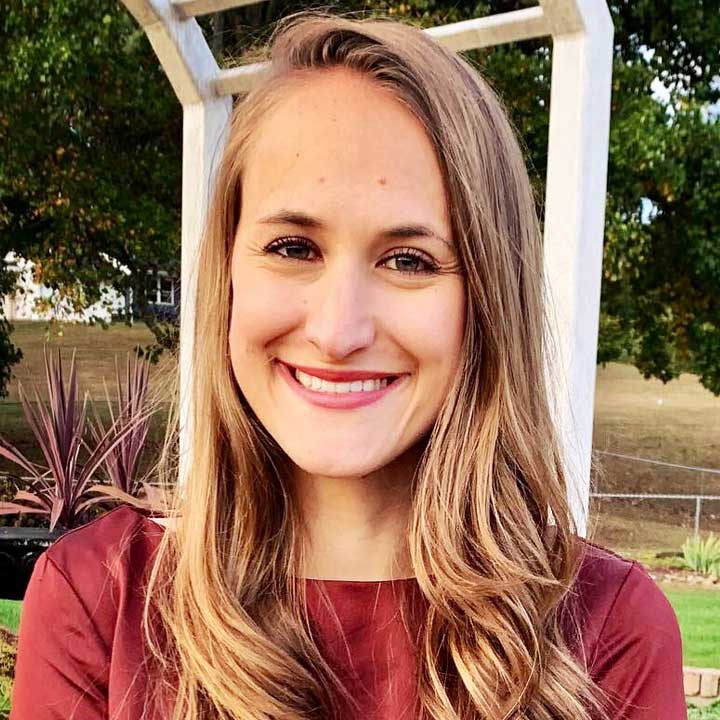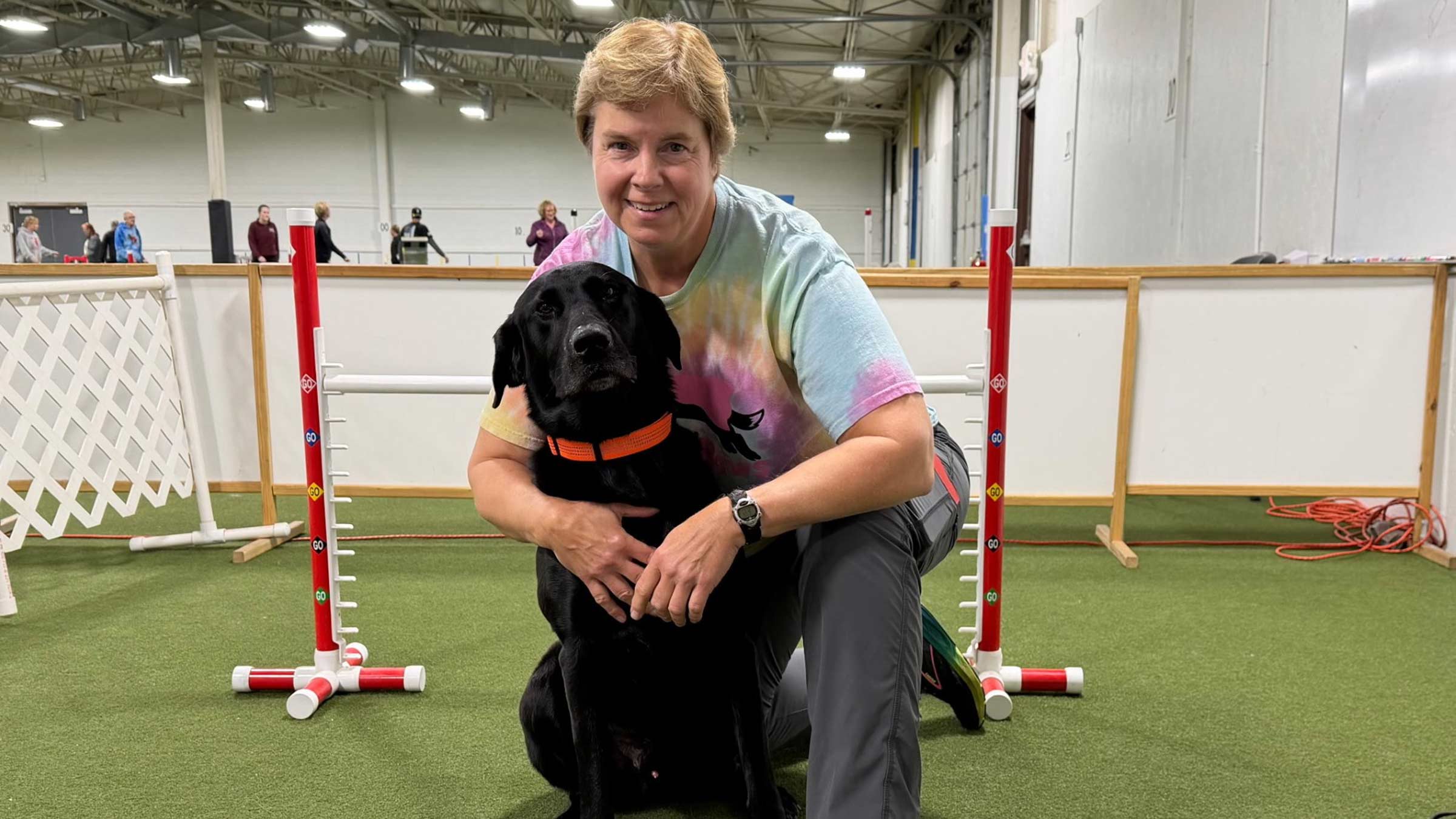Unraveling the genetics behind cancer
Using next-generation genetic technology, Sameek Roychowdhury, MD, PhD, is developing targeted therapies for people with advanced cancer.
A patient and his wife tour a research lab, watching a team of scientists analyze tumor samples on their way to a computer lab where a researcher pulls up a screen and shows the patient a DNA sequence derived from his own tumor.
The man has pancreatic cancer. His treatment options are limited.
Then, on the screen appears a reason to hope. The patient sees how well his tumor is responding to a drug therapy developed in this lab to specifically target his pancreatic tumor.
His treatment will be long and arduous, but, for now, the drug is working.
Most patients will never get to tour a research lab, but this lab is different.
Sameek Roychowdhury, MD, PhD, is a medical oncologist at The Ohio State University Comprehensive Cancer Center – Arthur G. James Cancer Hospital and Richard J. Solove Research Institute (OSUCCC – James) with a vision for creating drugs to target cancer. He often invites people participating in his research studies to witness firsthand how their tumor and blood samples are being analyzed and used in his lab to make more effective treatments.

“It’s clear to all of us in the lab that Sameek doesn’t just do science to do science,” says Emily Hoskins, a PhD student who works in the Roychowdhury Lab.
“When patients come into the lab and see what we’re working on, they realize that this is all for them,” says Hoskins.
How genetic mutations develop into cancer
Every human body comprises cells that copy billions of letters of DNA to form DNA segments called genes. Inevitably, there will be mistakes made during that process. It takes only one letter to change for a gene to mutate, altering the way the cells grow and spread.
“We all accumulate genetic mutations in the same way a house is worn by dirt, rain and salt,” Dr. Roychowdhury says. “As a house acquires environmental damage, our bodies acquire DNA damage.”
When specific damage leads to cells growing and dividing uncontrollably, the result is cancer.
All cancer is genetic, but not all cancer is inherited
Only 5-10% of cancer is the result of inherited risk factors. Most cancer stems from environmental factors, like tobacco exposure and air pollutants, or from random, unexplained errors in DNA replication. Over time, a field of science called precision cancer medicine has developed to identify and treat cancer-related genetic mutations. By gathering information about a person’s genome, or complete set of genetic material, an oncologist can develop therapies — often called “smart drugs” — that match the unique tumor of each patient.
Since joining Ohio State in 2013, Dr. Roychowdhury has emerged as a pioneer in cancer genomics, driving precision medicine forward for people with advanced cancer.
Reading DNA at lightning speed
A Columbus native, Dr. Roychowdhury identifies as a proud Buckeye, having earned undergraduate, medical and doctoral degrees at Ohio State. He first set foot on campus in 1994 as a student of molecular genetics, working under Harald Vaessin, PhD, chair of the Department of Molecular Genetics, to perform genetics research in fruit flies. He credits his time in the Vaessin Lab with sparking a lifelong interest in how genetics influence human disease.
“The genetic basis of cancer was a hot topic in the ’90s,” he says. “I was excited about the opportunity to take fundamental research and apply it in an area of vast unmet need.”
During his medical education, the world of genetic research turned upside down.
“By 2008, miraculous things were happening,” he remembers. The Human Genome Project, which finished sequencing the human genome by 2003, catalyzed the development of sequencing technology that can map out an individual’s genetic makeup at lightning speed.
“Imagine that someone’s complete collection of genes is a telephone book. It would take a long time to read and understand that book from page to page. Now, we can read that book in seconds,” Dr. Roychowdhury says.

Creating therapies targeted to a person’s specific cancer
Seemingly overnight, next-generation sequencing strategies opened a new frontier of discovery. Oncologists expanded a cellular view of cancer to include a molecular view, allowing them to classify many types of cancer by genetic subset, not just by cell type.
In theory, once oncologists determine the genetic classification of a person’s cancer, they can match that person to a therapy based on the patient's specific cancer instead of taking a one-size-fits-all approach to treatment.
In practice, it took several years for new sequencing technology to impact real patients. In the early 2010s, Dr. Roychowdhury was one of a handful of physician-researchers who stepped up to bridge the gap between the lab and the clinic.

“The scientific reviewers of the grants I wrote back in 2010 didn’t believe genetic testing would be feasible or impactful for patient care,” he says. “It seemed too complex to pull off all this genetic sequencing, interpret it, explain it to patients and then figure out how to develop treatments. Thankfully, we had the philanthropic support we needed to take a big risk with a big reward.”
Creating smarter drugs to treat cancer
In 2011, Dr. Roychowdhury analyzed the genomes of two people with advanced cancer.
“No one had ever done this before, and no one knew what to do with the data generated,” he says. “Even today, people are getting their tumor sequenced and it’s hard to know what to do with the data.”
In theory, researchers should be able to sequence a tumor and discover genetic mutations by comparing DNA taken from the tumor to DNA taken from the patient’s normal tissue. When they find what’s different, they find the cancer. But in practice, finding it in mounds of genetic data is like searching for a needle in a haystack.
It takes a remarkable amount of time and endurance to identify a vulnerability, search for a drug to target it and develop a new drug if nothing currently exists.
In 2013, he joined the Translational Therapeutics Program at the OSUCCC – James and established a precision oncology lab that partners with the pharmaceutical industry to implement new therapies in clinical trials.
Over the past 10 years, the Roychowdhury Lab has developed “basket” clinical trials, where people with different cancer types are treated based on a common genetic target. These studies have helped to identify patients with mutations in fibroblast growth factor receptors (FGFRs), a family of proteins that are involved in the spread of cancer. Mutations of the FGFR genes occur in 4-5% of all cancer types, creating an attractive therapeutic target. When Dr. Roychowdhury and his team began to study FGFR gene mutations in 2013, no drugs existed to target these mutations.

A decade later, the landscape is starting to shift. In addition to immunotherapy, patients with FGFR mutations are receiving second-generation smart drugs. Dr. Roychowdhury’s team has played a central role in developing five different FGFR smart drugs for various cancer types, including liver, uterus, bladder, lung, head and neck and pancreatic.
Discovering why some cancer treatments fail
Throughout a patient’s treatment, it can be challenging if not impossible to discern why some therapies succeed and others fail. At the OSUCCC – James, the Rapid Cancer Research Autopsy Study allows people with cancer to donate organs to science after their death so that scientists can conduct research that would otherwise not be possible.
Since the launch of the program in 2016, a team led by Dr. Roychowdhury has performed more than 60 autopsies.
“This program gives us an unprecedented view of when and why cancer becomes resistant to a specific therapy,” Dr. Roychowdhury says.
Even under the best of circumstances, the process of translating research into therapeutic treatments may take a decade or more. Dr. Roychowdhury and his lab are making progress at an unusual pace thanks to the power of teams.
“By collaborating with a large team of oncologists, radiologists, genetic counselors, pathologists, genomic scientists and computer scientists, we shorten the timeline of discovery,” Dr. Roychowdhury says.
But while Dr. Roychowdhury and his team are making strides against specific types of cancer, they can see only the tip of the iceberg. Most people with cancer haven’t yet had the opportunity to have their tumor sequenced in a lab or to take a drug that’s targeted to their cancer. Technology and data availability will improve with time, but time is precious for those with advanced cancer.
“One patient at a time, the goal of our translational research is to bring hope to every individual and every family we meet,” Dr. Roychowdhury says. “They will always be our ‘why.’”

Accurate, early cancer diagnosis matters
The James Cancer Diagnostic Center gives patients direct, expedited access to diagnostic testing and consultation with Ohio State cancer experts.
Schedule an appointment today




